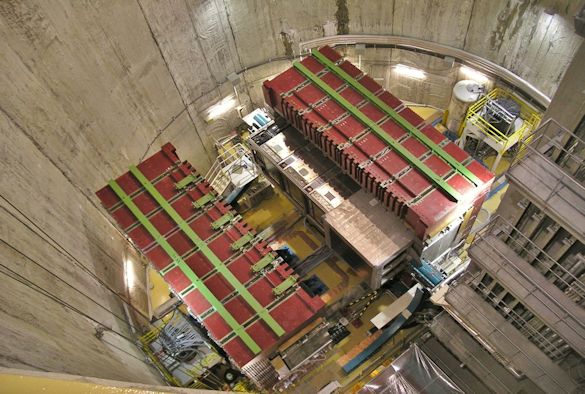
The T2K experiment, which the University is a key partner in, has announced their findings on the symmetry between neutrino and antineutrino oscillation.
With nearly twice the antineutrino data in 2016 compared to their initial results using antineutrino data in 2015, T2K has performed a new analysis of all data, fitting both neutrino and antineutrino oscillations simultaneously.
T2K’s new data continue the trends observed in 2015, which is a preference for maximal disappearance of muon neutrinos, as well as a discrepancy between the electron neutrino and electron antineutrino appearance rates. T2K observes more electron neutrinos and less electron antineutrinos appearing after oscillations at their far detector. In combination with relevant measurements from nuclear reactor experiments, the T2K data favour maximal Charge Parity violation.
The announcement of the findings was made at the 38th International Conference on High Energy Physics in Chicago. The material presented can be found at http://indico.cern.ch/event/432527/contributions/2143636/
Professor Christos Touramanis, from the University’s Department of Physics, said: “We are intrigued and excited by our results which indicate that CP is violated by neutrinos at 90% confidence level, but it is still too early to draw any conclusions.
“T2K aims to collect ten times more data by 2025, at which point we will be able to tell if our current results are early hints of an upcoming discovery, or a statistical fluctuation. The definite answer may only be provided by the next generation of mega-projects that we are preparing, both in Japan and in the USA.”
Why the universe is dominated by matter today, instead of being comprised of equal parts matter and antimatter, is one of the most intriguing questions in all of science. One of the conditions required for the observed dominance of matter over antimatter to develop is the violation of Charge-Parity (CP) symmetry, which is the principle that the laws of physics should be the same if viewed upside-down in a mirror, with all matter exchanged with antimatter
If CP violation occurs in neutrinos, it will manifest itself as a difference in the oscillation probabilities of neutrinos and antineutrinos.
In the T2K experiment in Japan, a muon neutrino beam is produced at the Japan Proton Accelerator Research Complex (J-PARC) located in Tokai village, Ibaraki prefecture, on the east coast of Japan.
The neutrino beam is created by directing 30 GeV protons from the J-PARC Main Ring (MR) accelerator onto a cylindrical target to produce an intense secondary particle beam that is focused and filtered by strong magnetic fields called neutrino horns. The focused particle beam decays into a beam of muon neutrinos or antineutrinos, depending on the sign of the filtering done by the neutrino horns.
The neutrino/antineutrino beam is monitored by a detector complex in Tokai, 280 m away from the neutrino target and aimed at the gigantic Super-Kamiokande underground detector in Kamioka, near the west coast of Japan, 295 kilometers (185 miles) away from Tokai.